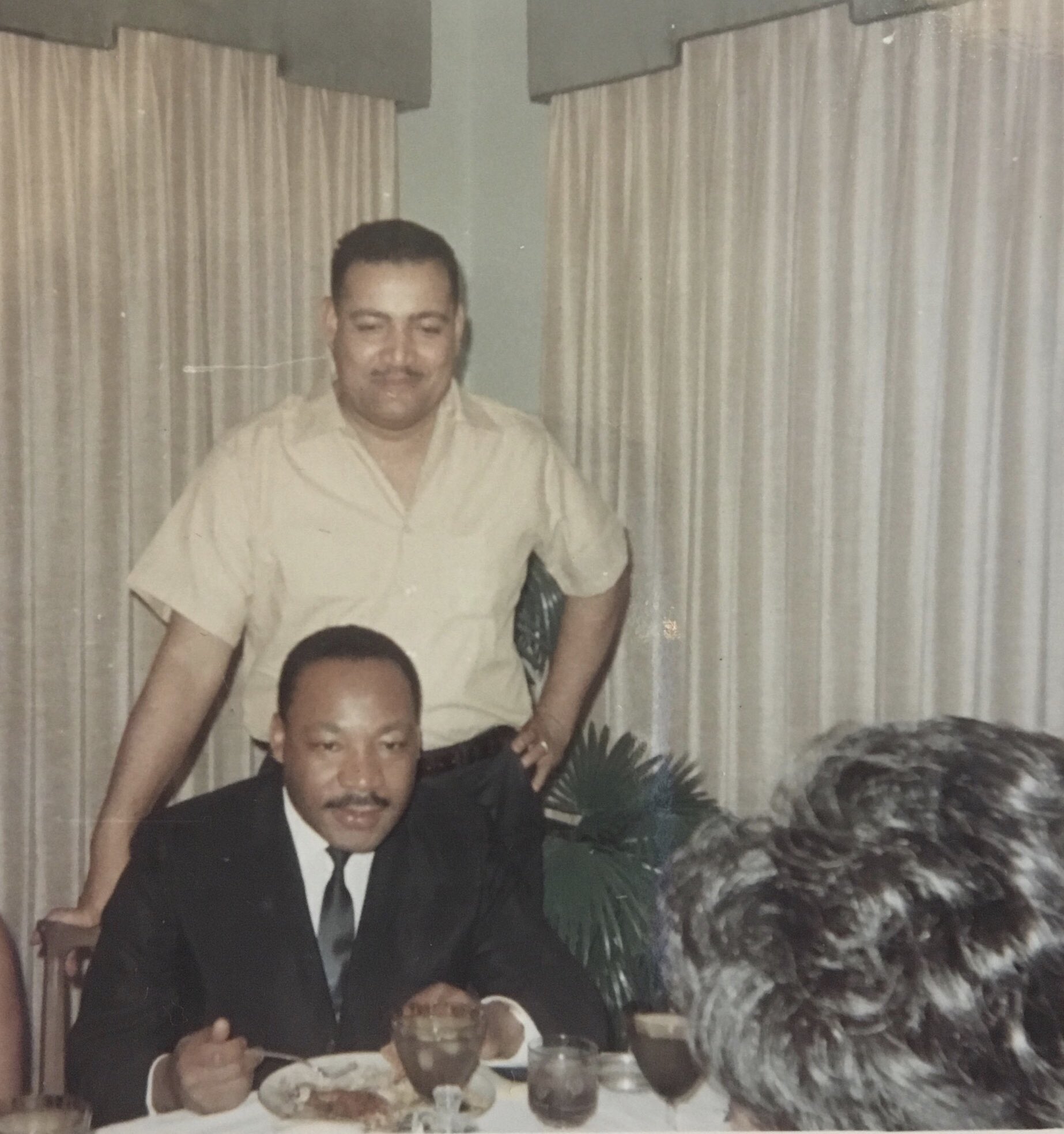Valarie Branch, Miss Southern University 1971

You are using an out of date browser. It may not display this or other websites correctly.
You should upgrade or use an alternative browser.
You should upgrade or use an alternative browser.
Rare and very interesting photos
- Thread starter Alumni
- Start date

The first black Africans to compete in the Olympics were Tswana tribesmen from South Africa
August 30 1904, two Tswana tribesmen, Len Tau (Len Taunyane) and Yasmani ( Jan Mashiani), they were referred to as LenTau and Yasmani because officials could not pronounce their surnames, became the first black Africans to compete in the modern Olympics when they ran in the Summer Olympics men's marathon held in St Louis. They had been in St Louis on a Boer Ear Exbibit in Louisiana Purchase Exposition held alongside games when they decided to enter the marathon at the last minute.
Tau ran barefoot on an insuitable course and over dusty roads, so dusty that it caused many of the athletes to collapse. Tau finished ninth and Mashiani came twelfth. This was a disappointing to Tau as many observers were sure he could have done better if he had not been chased nearly a mile off course by aggressive dogs.
Ok so some custom made nikes and I bet he’d smoke everyone
The first black Africans to compete in the Olympics were Tswana tribesmen from South Africa
August 30 1904, two Tswana tribesmen, Len Tau (Len Taunyane) and Yasmani ( Jan Mashiani), they were referred to as LenTau and Yasmani because officials could not pronounce their surnames, became the first black Africans to compete in the modern Olympics when they ran in the Summer Olympics men's marathon held in St Louis. They had been in St Louis on a Boer Ear Exbibit in Louisiana Purchase Exposition held alongside games when they decided to enter the marathon at the last minute.
Tau ran barefoot on an insuitable course and over dusty roads, so dusty that it caused many of the athletes to collapse. Tau finished ninth and Mashiani came twelfth. This was a disappointing to Tau as many observers were sure he could have done better if he had not been chased nearly a mile off course by aggressive dogs.
Country Store On Dirt Road. Note The Kerosene Pump On The Right And The Gasoline Pump On The Left. Brother Of Store Owner Stands In Doorway. Gordonton, North Carolina, 1939

Children In Front Of Grocery Store, Chicago, Illinois, 1941

When I see pics like this, I always wonder who were the people, what did they do for a living, what was their life like...
I didn't know they had Jewel, in Chi, in the 40s.
https://www.reddit.com/user/Graphitetshirt/



level 1
Graphitetshirt
·4h
Dude looks like he just heard some disturbing news
233
Reply
Share
ReportSave
level 2
SadPlayground
·2h
Prolly found out the price of that hat!
165
Reply
Share
Report
It is possibleI’m calling bullshit with this one. How did the women explain to slaves far away this code? Also, corn rows require having lots of hair. Typically, slaves had short damaged hair from the sun. Plus, if they were just communicating to their immediate group, why not just tell them? This is complete nonsense.
71 years ago today, Althea Gibson became the first black competitor in international tennis, after US officials, bowing to pressure, invited the 23-year-old to play in the National Championships (now the US Open).

Born in South Carolina to sharecropper parents who moved to Harlem when Althea was six, their neighbors took up a collection to pay for her tennis lessons. In 1956, she became the first person of color to win a Grand Slam title (the French Open). The following year she won both Wimbledon and the U.S. Nationals– then won both again in 1958. Often compared to Jackie Robinson, and with a lifetime total of 11 Grand Slam tournaments, Althea Gibson (1927-2003) is often called one of the greatest tennis players of all time.






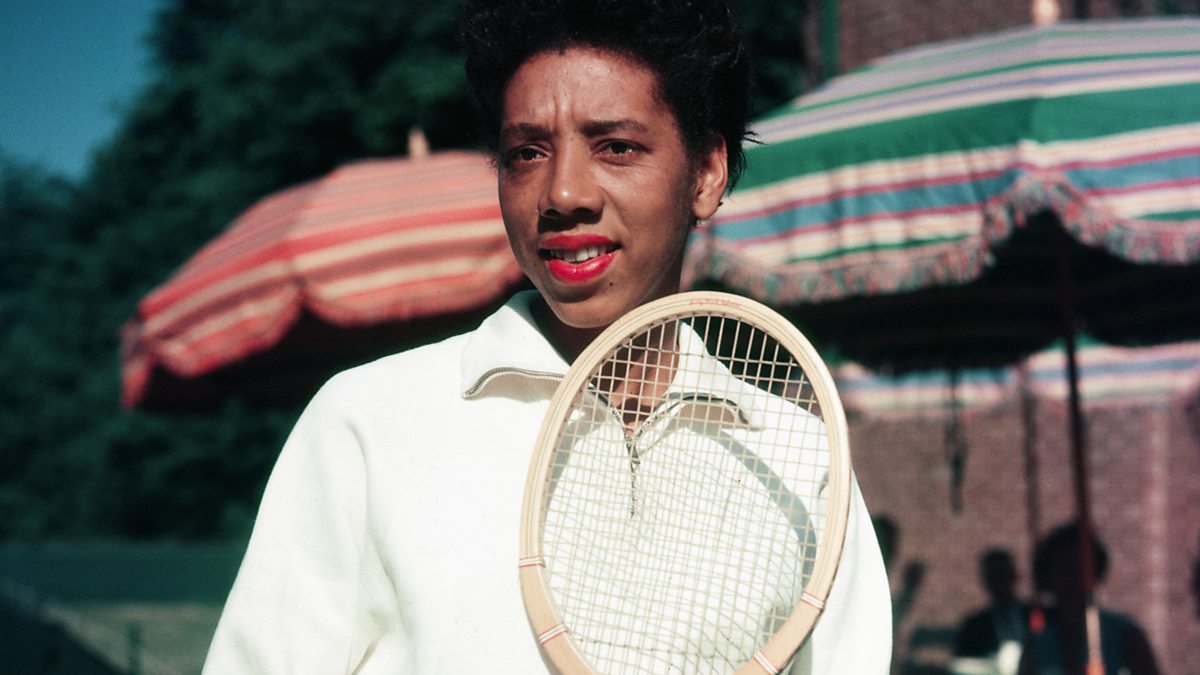
 www.bbc.co.uk
www.bbc.co.uk

Born in South Carolina to sharecropper parents who moved to Harlem when Althea was six, their neighbors took up a collection to pay for her tennis lessons. In 1956, she became the first person of color to win a Grand Slam title (the French Open). The following year she won both Wimbledon and the U.S. Nationals– then won both again in 1958. Often compared to Jackie Robinson, and with a lifetime total of 11 Grand Slam tournaments, Althea Gibson (1927-2003) is often called one of the greatest tennis players of all time.







BBC Radio 4 - Great Lives, Althea Gibson
The first black tennis player to win Wimbledon is the choice of Professor Devi Sridhar.

On August 19, 1958, members of the OKC NAACP Youth Council (led by Clara Luper) occupied seats at the Katz Drug Store lunch counter in downtown OKC and politely asked to be served. When denied service, the students remained seated in a peaceful protest. After three days of the student sit-in, Katz Drug Store management agreed to serve them. The bravery of these students helped to end segregation in public places across Oklahoma.
on this day in 1918, the African-American mathematician Katherine Johnson was born. Her calculations of orbital mechanics at NASA were critical to the success of the first U.S. manned spaceflights.


Johnson’s reputation for brilliantly forecasting flight trajectories using complex manual computations. Her leadership helped to establish confidence in the use of computers to perform the same tasks, yet astronaut John Glenn refused to fly unless Johnson manually verified the computer’s numbers.
The West Virginia math prodigy graduated from high school when she was just 14 years old, and her college, West Virginia State, had to add new math courses just for Katherine. At NASA, which was still racially segregated at the time, her knowledge of analytic geometry helped make quick allies of her white male bosses. She worked out rendezvous paths for the Apollo lunar lander on flights to the Moon and, later her calculations were essential to launching the Space Shuttle program. While the racial and gender barriers were always there, Katherine says she ignored them, and never really felt them. She was assertive, asking to be included in editorial meetings (where no women had gone before). She simply stated that she had done the work and that she belonged… There is even a Barbie doll based on the female role model.





Johnson’s reputation for brilliantly forecasting flight trajectories using complex manual computations. Her leadership helped to establish confidence in the use of computers to perform the same tasks, yet astronaut John Glenn refused to fly unless Johnson manually verified the computer’s numbers.
The West Virginia math prodigy graduated from high school when she was just 14 years old, and her college, West Virginia State, had to add new math courses just for Katherine. At NASA, which was still racially segregated at the time, her knowledge of analytic geometry helped make quick allies of her white male bosses. She worked out rendezvous paths for the Apollo lunar lander on flights to the Moon and, later her calculations were essential to launching the Space Shuttle program. While the racial and gender barriers were always there, Katherine says she ignored them, and never really felt them. She was assertive, asking to be included in editorial meetings (where no women had gone before). She simply stated that she had done the work and that she belonged… There is even a Barbie doll based on the female role model.



Isn’t that Gizelle Bryant married to that preacher Jamal who is pastor of Eddies old church New Birth
https://www.reddit.com/user/Graphitetshirt/


level 1
Graphitetshirt
·4h
Dude looks like he just heard some disturbing news
233
Reply
Share
ReportSave
level 2
SadPlayground
·2h
Prolly found out the price of that hat!
165
Reply
Share
Report






It's amazing how much better chicks looked without all of that shit on their face and real eye lashes.Damn she fine

True. Imma fuck em all regardless thouguh. But your right.It's amazing how much better chicks looked without all of that shit on their face and real eye lashes.


Facts. They think we approve just because we are ducking them down. They fail to realize I would fuck a 1 legged chick if she was fine enough.True. Imma fuck em all regardless thouguh. But your right.

Yup.Facts. They think we approve just because we are ducking them down. They fail to realize I would fuck a 1 legged chick if she was fine enough.





The ‘white’ slave children of New Orleans in rare photographs, 1863

Transcript of the Harper’s Weekly article, January 30, 1864: Isaac White is a black boy of eight years, but none the less intelligent than his whiter companions. He has been in school about seven months, and I venture to say that not one boy in fifty would have made as much improvement in that space of time.
--------------------------------------------------------------------------------------------------------------------------
On January 30, 1864, Harper’s Weekly started to publish portraits of children captioned “Emancipated Slaves—White and Colored,” as part of a publicity campaign to raise funds for schools for recently emancipated slaves in New Orleans. The children featured in these photographs drew attention to the fact that slavery was not solely a matter of color. If a child’s mother was a slave, then he or she was a slave as well.
The images included children with predominantly European features photographed alongside dark-skinned adult slaves with typically African features. It was intended to shock the viewing audiences with a reminder that slaves shared their humanity, and evidence that slaves did not belong in the category of the “Other”.


By disseminating images of seemingly white children, the campaign organizers alluded to the horrific conditions of slavery while creating a palatable image of emancipation for anxious audiences. These were not the lustful, violent slaves of planters’ nightmares, but rather docile, sentimentalized children and patient, pious adults.
The pointed use of children naturalizes stereotypes of mixed-raced individuals. As historian Walter Johnson has described, frailty, delicacy, and submissiveness were all characteristics identified by slave traders and buyers as inherent to the special status and high value of light-skinned slaves on the slave market. These qualities could be read on the bodies of children without the artifice of costuming or attributes that an adult subject might have necessitated.

At the same time, these images participated in the wider discourse of photography’s indexical relationship to nature and its ability to reveal the unseen. The pale bodies of these young children visualized miscegenation, which was and would continue to be a great source of anxiety in the wake of emancipation, but the effects of which had primarily been hidden from public scrutiny before the war.

Moreover, through this campaign, miscegenation resulting in white slaves would be constructed as part of the history and not the future of a post-Civil-War United States. With the end of slavery legally decreed, abolitionism would need to find a new cause to champion.

Transcript of the Harper’s Weekly article, January 30, 1864: Augusta Boujey is nine years old. Her mother, who is almost white, was owned by her half-brother, named Solamon, who still retains two of her children.
Depicted as eager to learn, patriotic, and pious, these New Orleanian children would also be used to vindicate the much-maligned abolitionist movement, which had been considered a radical political third rail in the struggle to preserve the Union in the late 1850s.

https://rarehistoricalphotos.com/white-slave-children-photographs/

Transcript of the Harper’s Weekly article, January 30, 1864: Isaac White is a black boy of eight years, but none the less intelligent than his whiter companions. He has been in school about seven months, and I venture to say that not one boy in fifty would have made as much improvement in that space of time.
--------------------------------------------------------------------------------------------------------------------------
On January 30, 1864, Harper’s Weekly started to publish portraits of children captioned “Emancipated Slaves—White and Colored,” as part of a publicity campaign to raise funds for schools for recently emancipated slaves in New Orleans. The children featured in these photographs drew attention to the fact that slavery was not solely a matter of color. If a child’s mother was a slave, then he or she was a slave as well.
The images included children with predominantly European features photographed alongside dark-skinned adult slaves with typically African features. It was intended to shock the viewing audiences with a reminder that slaves shared their humanity, and evidence that slaves did not belong in the category of the “Other”.


By disseminating images of seemingly white children, the campaign organizers alluded to the horrific conditions of slavery while creating a palatable image of emancipation for anxious audiences. These were not the lustful, violent slaves of planters’ nightmares, but rather docile, sentimentalized children and patient, pious adults.
The pointed use of children naturalizes stereotypes of mixed-raced individuals. As historian Walter Johnson has described, frailty, delicacy, and submissiveness were all characteristics identified by slave traders and buyers as inherent to the special status and high value of light-skinned slaves on the slave market. These qualities could be read on the bodies of children without the artifice of costuming or attributes that an adult subject might have necessitated.

At the same time, these images participated in the wider discourse of photography’s indexical relationship to nature and its ability to reveal the unseen. The pale bodies of these young children visualized miscegenation, which was and would continue to be a great source of anxiety in the wake of emancipation, but the effects of which had primarily been hidden from public scrutiny before the war.

Moreover, through this campaign, miscegenation resulting in white slaves would be constructed as part of the history and not the future of a post-Civil-War United States. With the end of slavery legally decreed, abolitionism would need to find a new cause to champion.

Transcript of the Harper’s Weekly article, January 30, 1864: Augusta Boujey is nine years old. Her mother, who is almost white, was owned by her half-brother, named Solamon, who still retains two of her children.
Depicted as eager to learn, patriotic, and pious, these New Orleanian children would also be used to vindicate the much-maligned abolitionist movement, which had been considered a radical political third rail in the struggle to preserve the Union in the late 1850s.

https://rarehistoricalphotos.com/white-slave-children-photographs/
Not to mention no tattoos all over their whole bodiesIt's amazing how much better chicks looked without all of that shit on their face and real eye lashes.
I need to see this film and Viola Davis needs to play her...
THE WHITE GUY IS JOE ARRIDY
Thx for this info, I didn't know this
Similar threads
- Replies
- 8
- Views
- 441
- Replies
- 0
- Views
- 205
- Replies
- 14
- Views
- 881
- Replies
- 2
- Views
- 230



